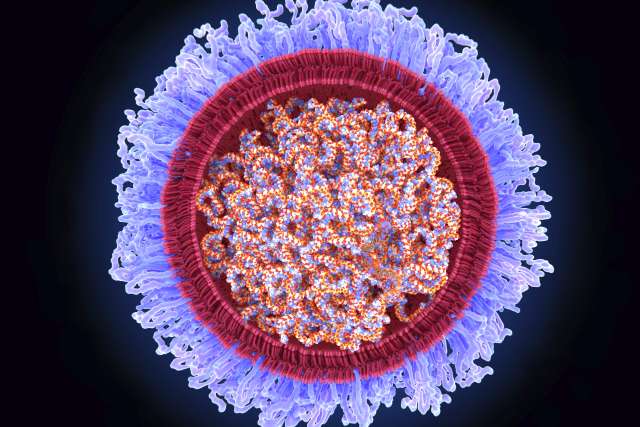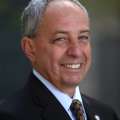SICKLE CELL DISEASE IS THE MOST COMMON INHERITED BLOOD DISEASE in the United States, afflicting an estimated 100,000 people. The disease causes a litany of miseries: excruciating pain crises, organ damage, bone loss, stroke, blindness, lung disorders, anemia. It both shortens and circumscribes patients’ lives, undermining their ability to pursue an education, earn a living or raise children. Yet, as you will read in the cover story of this issue of U Magazine (“Solving Sickle Cell,” p.30), scientists are closing in on a cure for this genetic plague, with UCLA Health researchers in the vanguard of that effort
In the 1980s, investigators developed the procedures to synthesize biologically active mRNA in the lab. At that point, they began exploring ways to develop mRNA as a therapeutic agent. It wasn’t until the ’90s, however, that they realized that an mRNA encased in a liposome could be used to create a vaccine. Then came another 20-odd years of tinkering, as scientists designed mRNA vaccines for one disease after another — influenza, HIV, cancer — and tested them in cell cultures and animal models. These ventures failed repeatedly, but they taught scientists more each time.
By the mid-2010s, two clinical trials were underway with mRNA vaccines — one for rabies, the other for flu. A few biotech companies had entered the field, and the U.S. Defense Advanced Research Projects Agency (DARPA) was funding industry research. Then, in January 2020, the World Health Organization announced an outbreak of coronavirus-related pneumonia in Wuhan, China. Within days, the SARS-CoV-2 virus’s genome had been posted online and Moderna had begun creating a prototype vaccine to fight it.
By March, when the WHO declared the pandemic, BioNTech and Pfizer had teamed up for their own assault. Government money began flooding to these and other companies and academic centers, accelerating data acquisition and exchange. Human trials got underway. Both mRNA vaccines soon proved to be 95% effective. And in December 2020, the Food and Drug Administration granted each of them emergency-use approval.
Science had won.
The race to cure sickle cell disease has followed a similar pattern: a marathon of basic research and clinical trials involving a variety of ailments, followed by a sprint in the final stretch. Because society responds less urgently to chronic disorders than to viral pandemics, it will take a bit longer to reach the finish line. But we’ll get there, nonetheless.
In the case of sickle cell, the technology that offers this promise is gene therapy — a procedure in which a patient’s aberrant cells are genetically reprogrammed. Human trials for this approach began in 1990, showing promising results in children with severe immunodeficiencies. Over the next 20 years, scientists developed experimental gene therapies for a range of inherited diseases, as well as for various cancers and HIV. Some of these were eventually approved by the FDA.
For sickle cell disease, however, the first clinical trial of gene therapy had to wait until 2013, when scientists had refined the technique — and their understanding of this complex disease — enough to ensure that it had a chance of working. Since then, dozens of patients who have received such therapies — including some at UCLA — have found lasting relief after a single treatment. More time and study are needed to monitor for long-term efficacy and potential delayed side effects, but there’s ample reason for optimism.
Such successes help explain why scientists are willing to spend decades pursuing research that has no immediate application and conducting trials that don’t pan out. In part, it’s sheer curiosity — a yen for knowledge. But it’s also a desire to make a difference. Scientists watch their friends, family members, neighbors or loved ones suffer. If they’re clinicians, they witness their patients struggle. They want to help. And that deeply human impulse keeps them at the lab bench or the study site, day after day, year after year.
“It is sometimes said that science has nothing to do with morality,” the biochemist Linus Pauling once observed. “This is wrong. Science is the search for truth, the effort to understand the world; it involves the rejection of bias, of dogma, of revelation, but not the rejection of morality.” I’d go a step further: Science, at its best, is driven by morality. It aims not only to find the truth, but also to harness it for the betterment of the human condition.
That’s why, sooner or later, science always wins.

